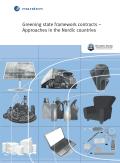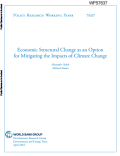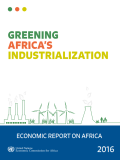
In the field of adaptation governance research, current discussion on the barriers to adaptation shows that theoretical explanations for why institutions emerge and how they enable or constrain adaptation are underdeveloped. In this Perspective, the authors show that there is a significant opportunity to advance the understanding of adaptation governance by integrating insights that have been developed in the extensive commons literature on the institutions that work to overcome social conflicts or dilemmas. 'Realist-materialist' approaches to understanding such collective action are particularly valuable to adaptation governance research because they emphasize how biophysical conditions give rise to certain types of social dilemma. Climate change affects these biophysical conditions, and thus may alter dilemmas or create new ones. Based on realist-materialist reasoning, this Perspective describes six types of dilemma, illustrates each with a case from the adaptation literature and draws on insights from the commons literature regarding relevant contextual conditions and effective policy instruments for overcoming social dilemmas.

The purpose of this study was to clear out how Green Public Procurement has been realized in state framework contracts in the Nordic countries, to propose country-specific ways to improve the situation, and to draw a general model of efficient ways to realize green state framework contracts. The study was carried through in 2014 and 2015 by Bjørn Bauer and Rikke Fischer-Bogason (PlanMiljø, Denmark), Luitzen de Boer and Sigurd Vildåsen (Norwegian University of Science and Technology), and Timo Kivistö (Kivistö Consulting, Finland). The study was supervised by the Working Group of Nordic Council of Ministers for Sustainable Consumption and Production (i.e. HKP-group).

Improving the resilience of the economy in the face of uncertain climate change damages involves irreversible investments to scale up new technologies that are less vulnerable to the effects of climate change. The benefit of having such options includes the avoided welfare cost of diverting consumption to scaling up the new technology after production possibilities have been diminished by climate change impacts. This needs to be balanced against the upfront cost of scaling up a technology that is potentially less productive than incumbent technologies. The paper uses a real options approach to investigate this trade-off, based on numerical simulation of a multi-period model of economic growth and climate change impacts that includes a one-time cost associated with scaling up the alternative technology. The value of the option provided by investment in the more resilient technology depends on the ex-ante volatility of climate change damages, as well as how rapidly climate change degrades the productivity of the economy's established technology.

Buildings represent a key area for climate change mitigation. They account for approximately 30% of global energy consumption, and in turn generate around 20% of all energy-related greenhouse gas (GHG) emissions. Current trends in population growth and urbanization will lead to a significant need for new buildings in the near future. Such growth will bring with it a rise in energy consumption and associated GHG emissions – and not just from residential buildings but also the commercial and industrial developments that accompany them. Considerable opportunities exist to realize significant gains in energy efficiency and implement low-carbon strategies in urban areas.
